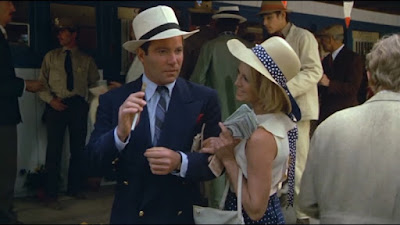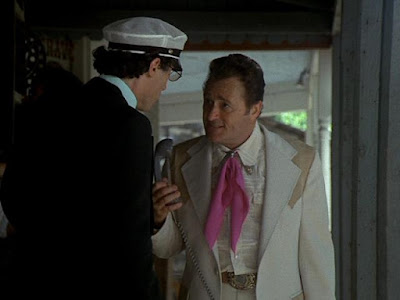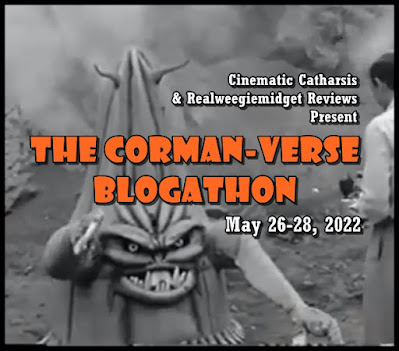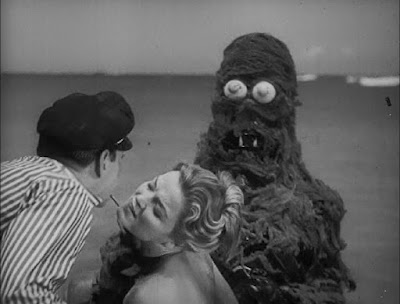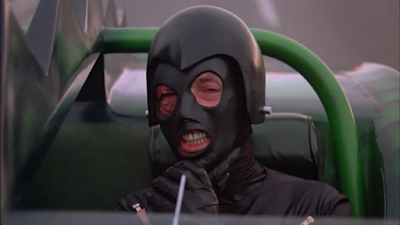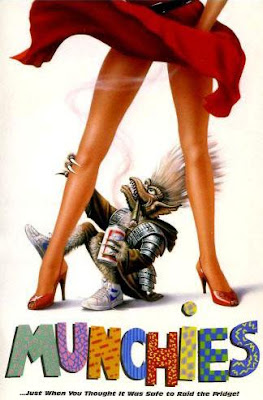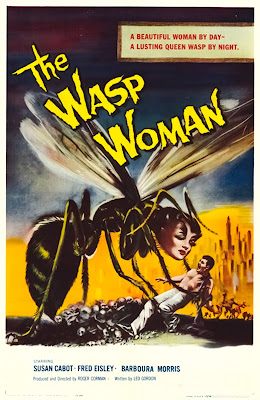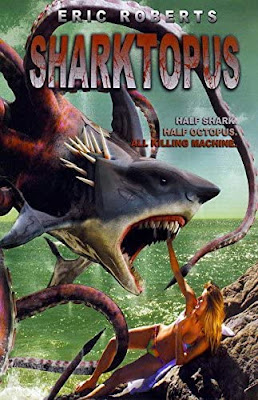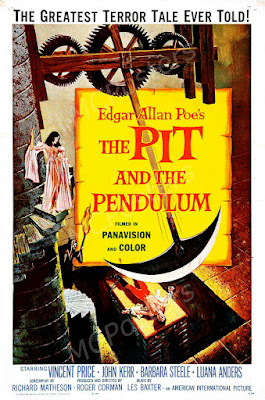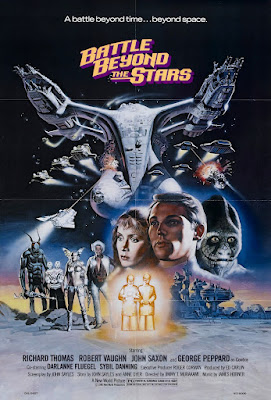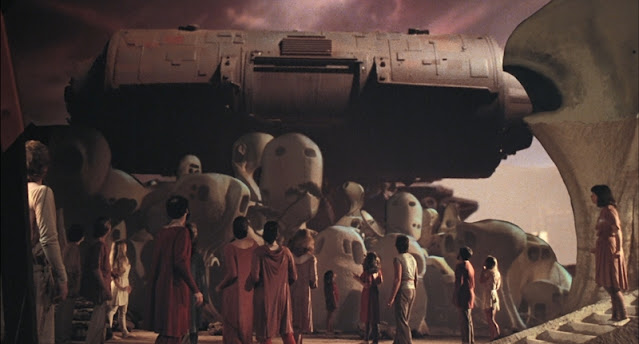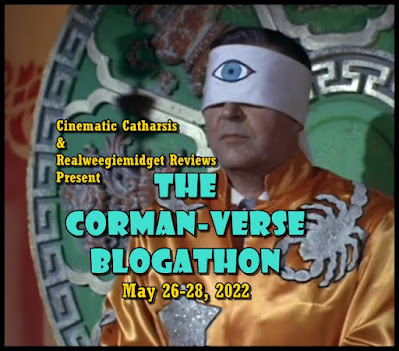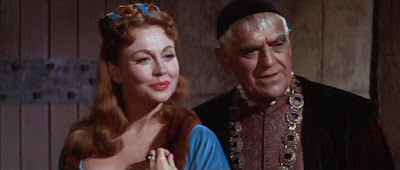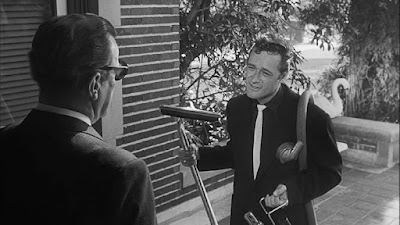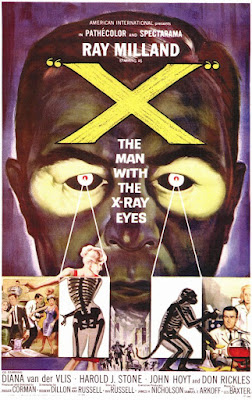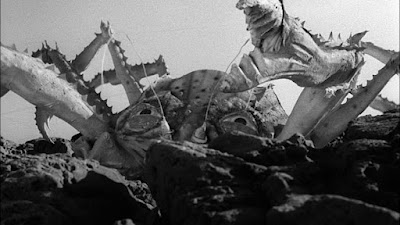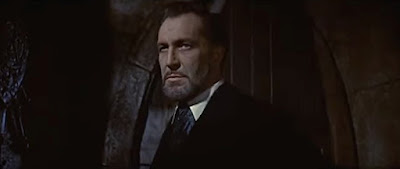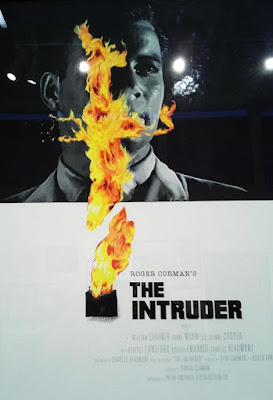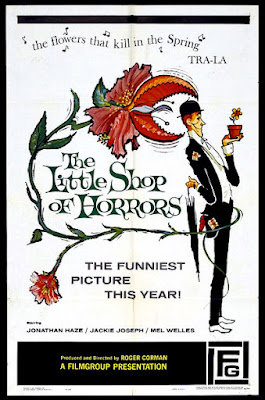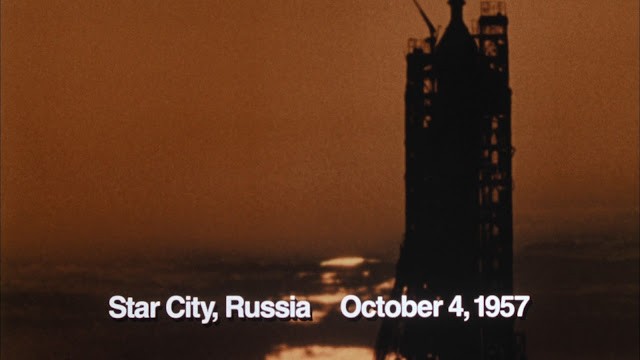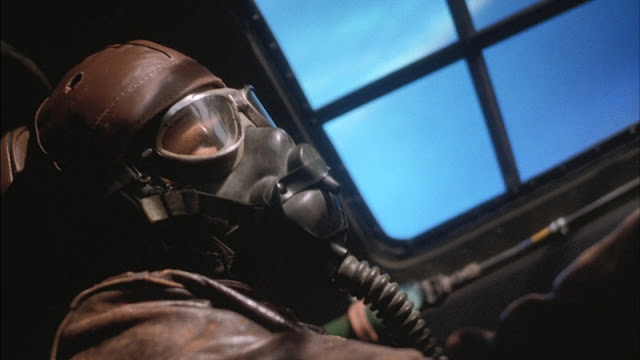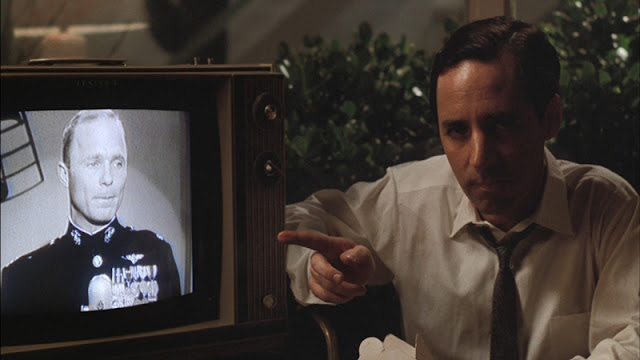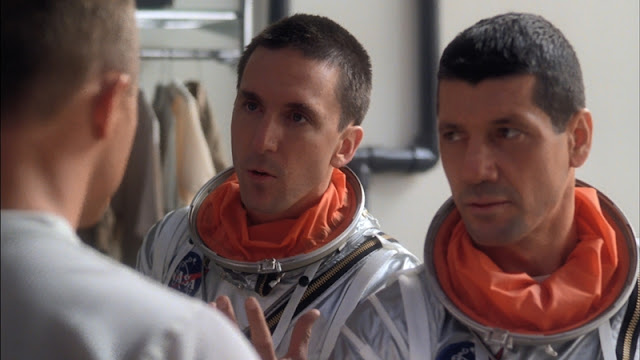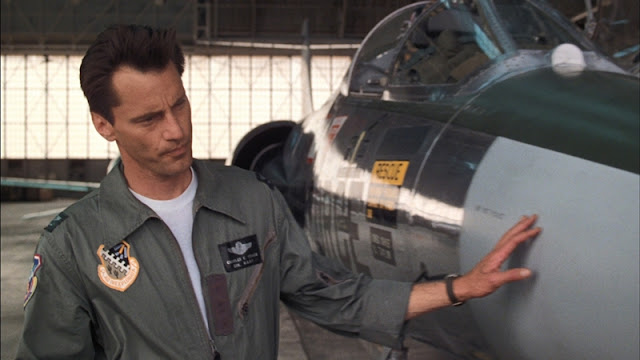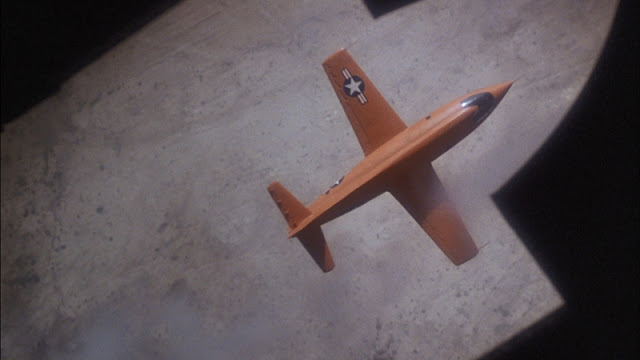(1980) Directed by Jimmy T. Murakami; Written by John Sayles;
Story by Anne Dyer; Starring: Richard Thomas, Darlanne Fluegel, John Saxon,
Robert Vaughn, George Peppard, Sybil Danning, Sam Jaffe and Morgan Woodward;
Available on Blu-ray and DVD
Rating: ***½
This post is part of the Corman-verse Blogathon, hosted by Yours Truly and Gill Jacob from Realweegiemidget Reviews.
Be sure to check out all the terrific posts from an esteemed bunch of
participants!
“It not only got very good reviews but it was commercially
successful in the United States and overseas, and I think to a large extent it
was the characters, it was the differentiation, the individuality.” – Roger
Corman (from DVD commentary with John Sayles)
“It was a playground, and Roger let us experiment.” – Alex
Hajdu, Assistant Art Director (from “Shoestring Space Opera”)
A long time ago in a galaxy, far – hold the phone. Let’s
back up a moment… A long time ago, in a land not too far away, Roger Corman
assembled a group of unknown but talented young professionals to create a space
opera on his own terms. Screenwriter /Corman-protégé John Sayles drew from the
same well as Star Wars, particularly Seven Samurai (1954),
as its inspiration, but The Wizard of Oz (1939) provided another template. Budgeted
at $2 million (a paltry sum by Hollywood standards), Battle Beyond the Stars
was Corman’s most expensive production to date. Penny-pinching Corman made sure
he got a return on his investment, however, repurposing many elements in the
film in other New World productions (obviously he was into recycling, long
before it was in vogue). The informative Blu-ray commentary by producer Corman
and writer Sayles is like a mini film school, providing us a lesson in low budget
movie making.
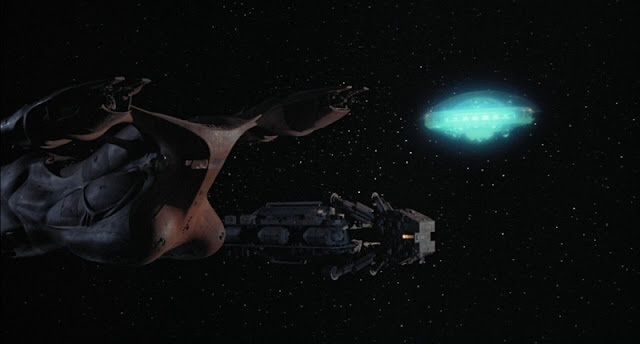
Corman hired Jimmy T. Murakami* (who was looking to break
into directing live-action features) to helm the picture. For the most part,
Corman stayed out of the way, although he reportedly directed one scene,
featuring many of the principal characters together. Although it took several
months to get all the pieces in place, Battle Beyond the Stars was shot
during a brisk five-week shooting schedule, using a converted lumberyard in
Santa Monica, California for the studio. New sets were constructed as quickly as
they were torn down, which required filming some scenes when the paint was
still wet.
* Fun Fact #1: The Japanese/American animator is probably
best known for directing the famous 1969 Tootsie Roll Pop commercial
(originally known as “Mr. Cow”), featuring an owl that attempts to answer the age-old question, “How many licks
does it take to get to the center of a Tootsie Roll Pop?” Over half a century
later, it still appears on TV from time to time, albeit in truncated form.

The list of behind-the-scenes crew members reads like a
who’s who of Hollywood filmmakers. 20-something James Cameron, who was promoted
to art director on the production, provided the intricately detailed models (according
to Corman, Cameron could describe the purpose of every bump and nook on his
spacecraft). His team included effects maestros Dennis and Robert Skotak, as
well as Alec Gillis. Corman’s assistant production manager, Gale Anne Hurd went
on to a hugely successful producing career. Young James Horner provided the
score, and an uncredited Bill Paxton worked on set construction. It’s
interesting to note that all of these individuals worked with Cameron in
subsequent films.

Sayles wanted the ships to look distinct, so you could
distinguish which character piloted them. Thanks to Cameron and his team, each space
vehicle delivers on that requirement. According to Dennis Skotak (responsible
for miniature design and construction, along with his brother Robert), each
ship reflected the personality of the characters. He wanted a different look,
compared to Star Wars, where he felt that “everything came from the same
factory.” As anyone accustomed to New World’s stable of genre films can attest,
many of the space battle scenes look awfully familiar, re-purposing models and
effects footage.

The story opens on a familiar note, with the despotic Sador*
(played with relish by John Saxon) delivering an ultimatum to the meek
inhabitants of the planet Akir (an obvious nod to filmmaker Akira Kurosawa):
join him or die. Sador (with a name like that, you just know he’s up to no
good), ravages one civilization after another, reducing them to cinders with
his interstellar convertor (basically a Death Star clone). He doesn’t want to
raid their crops or take their food; true to his control-freak nature, he only
wants to dominate them. Sure, it’s the sort of role that Saxon could probably
do in his sleep, but he appears to be having a blast playing a tyrant, so who’s
complaining? Why Sador chooses to go away (leaving a couple of incompetent
stooges to guard the planet), so the Akir denizens have time to enlist a private
army against him, we’ll never know. Shad (Richard Thomas) sets off in his curvy
space ship (uh huh, it has boobs), along with sassy computer “Nell” (Lynn
Carlin), in a desperate search for individuals* who will fight.
* Fun Fact #2: Sayles wanted the seven mercenaries Shad
enlists to be from different species. Part of the script-writing process involved
thinking about the various cultures and philosophies of the various alien races.

Among the first off-worlders Shad encounters is Nanelia
(Darlanne Fluegel). Bored with her life on a space station, with only her
cyborg father Dr. Hephaestus (Sam Jaffe) and androids for companions, she’s eager
to join him in his quest. Next in his encounters, is the affable Cowboy (George
Peppard). His laid-back persona belies his willingness to fight in a pinch. (A Confederate
flag on his spaceship is a bit over the top, though, even for this movie – the less
said, the better). Of course, he’s empowered by a helping or two of liquid
courage, with a handy belt-mounted gizmo that dispenses booze and ice (because
whiskey flasks are so 20th century). Nanelia convinces the
lizard-like Cayman (Morgan Woodward) to join the fight. He has an axe to grind
against Sador, who wiped out his species, making the enemy of his enemy his friend.
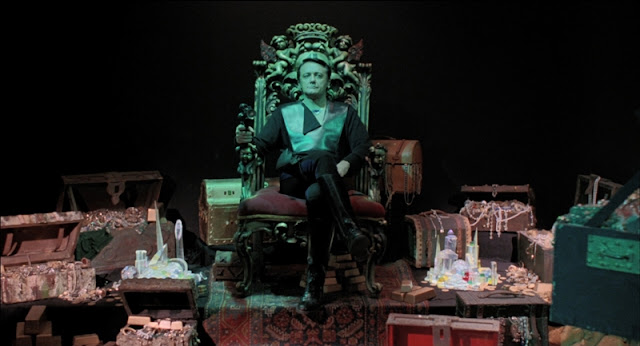
The most enigmatic mercenary is Robert Vaughn as Gelt (the Yiddish
word for “money”), a reprisal of sorts, of his role from the Seven Samurai
remake The Magnificent Seven (1960). He laments that he has amassed a
vast fortune, but has nowhere to spend it, so the prospect of a decent meal and
place to sleep without watching his back seems inviting to him. In a movie full
of black-and-white characters, he provides a healthy dose of ambiguity. As a gun
for hire who works for the highest bidder, it’s implied that he’s worked for
both sides of the fence.

St. Exmin (played by Sybil Danning, who’s known her way
around several Corman films) belongs to a warlike race known as the Valkyrie.
For her people, the thrill is in the fight. Her creed is to “live fast, fight
well, and have a beautiful ending.” (a riff on John Derek’s famous quote from
1949’s Knock on Any Door, “Live fast, die young, and have a good-looking
corpse.”).* St. Exmin’s eye-catching, gravity-defying costume** undoubtedly
fueled many adolescent-male fantasies back in the day. Danning proves to be more
than just eye candy, providing a spunky presence. While initially being an
annoyance to Shad, she proves her worth in battle.***
* Fun Fact #3: According to Sayles, he based her character
on the Native American Dog Soldiers, who found honor in death.
** Fun Fact #4: It should come as no surprise to anyone that
the costumers had a difficult time keeping Danning’s (ahem) assets contained. According
to co-star Thomas, her costume was prone to quite a few wardrobe malfunctions.
*** Fun Fact #5: Look for an oops(!) just before the hour-and-25-minute
mark, inside St. Exmin’s ship. In the left corner of the frame, behind her seat,
you can spot a member of the film crew crouching down.
Among the most unique species Shad encounters is Nestor, a
collective intelligence comprised of multiple humanoid forms. Each body is a
cell in a much larger organism, experiencing everything that each unit senses.
Nestor’s deadpan sense of humor is a nice little touch. When one samples a hot
dog that Cowboy is preparing, he (or more accurately, his spokesman) comments, “There’s
no dog in this.”
* Fun Fact #6: If one of the Nestor (Nestors?) looks
familiar, he’s played by prolific character actor Earl Boen, best known as the
sleepy criminal psychologist in the first three Terminator movies.
James Horner’s marvelous, sweeping music score (one of his
earliest) fits the subject matter perfectly. Think of this as his prototypical
blockbuster score, which takes the film to a different level. Many elements and
cues are recognizable in subsequent movies. The score elevates the visuals, to
the point where any deficits are scarcely noticed. Ever-cost-conscious Corman,
recognizing the value of what he heard, re-purposed the soundtrack for other
New World trailers, and for at least one film, 1985’s Barbarian Queen, virtually
recycled the entire score (Alas, Horner’s composition could only do so much for
substandard material).

Corman and crew could only do so much with the budgetary restrictions,
resulting in some obvious cost-cutting measures. The effects team avoided
depictions of the ships landing and taking off, which would have required
pricey effects. The camera people refrained from panning, which would reveal
the size limitations of the sets (with one notable exception – the expansive control
deck of Sador’s ship required an entire sound stage). Much like the original Star
Trek series, the little community on Akir represents the entire planet’s
civilization, thus requiring a healthy suspension of disbelief. In a scene depicting
a ground battle with Sador’s army, the antagonists are conveniently channeled
through one subterranean corridor so they can be ambushed.
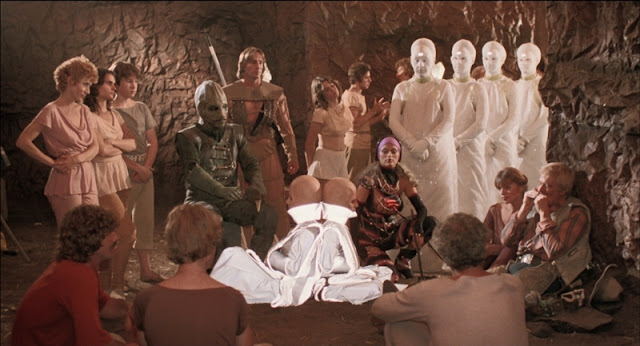
Corman makes no apologies about jumping on the Star Wars
train with his little space epic that could, Battle Beyond the Stars. The
difference, however, is in the details, especially Sayles’ witty script, which
never takes itself too seriously. Horner’s score and Cameron’s effects work
also go a long way to make the most of things. It’s a popcorn movie, not in the
derogatory sense, but in the best possible way. This isn’t meant to be a cerebral
exercise like Solaris or 2001: A Space Odyssey. It’s fun over
substance, told in broad strokes, and sometimes that’s all you need.
Sources: Shout Factory Blu-ray commentary by Roger Corman
and John Sayles; “His Name was Shad,” 2011 interview with Richard Thomas; “Shoestring
Space Opera,” 2011 featurette; How I Made a Hundred Movies in Hollywood and
Never Lost a Dime, by Roger Corman, with Jim Jerome; “How They Painted Samurai
Jack Plus: the secret history of the Tootsie Pop commercial (and global
animation news),” Animation Obsessive, Nov. 7, 2021


